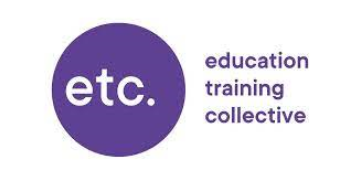Schools must make sure teaching assistants “supplement – not replace – the teacher” and ensure pupils who struggle most “spend at least as much time with the teacher as other pupils, if not more”, new Education Endowment Foundation guidance states.
Published today, the guide gives school leaders practical “recommendations to effectively deploy teaching assistants (TAs) in schools across the country”.
For the updated guide, the EEF reviewed the evidence base and drew together findings from over 52 different studies to “provide five clear and evidence-informed recommendations on how to best utilise TAs to support attainment outcomes”.
According to the most recent data, there are over 280,000 TAs across schools in England, a figure that has increased by 28 per cent since 2011.
Emily Yeomans, co-chief executive of the EEF, said TAs “play a vital role in our education system.
“Ensuring TAs are deployed strategically is crucial to making sure they have the biggest impact on learning, supporting teachers and ultimately helping pupils to reach their potential at school. Put simply, TAs are an invaluable part of our school workforce.”
Here are the EEFs five tips…
1. ‘Deploy TAs in ways that enable all pupils to access high-quality teaching’
TAs should “supplement – not replace – the teacher”.
This means pupils who struggle most “should spend at least as much time with the teacher as other pupils, if not more”.
Schools should ensure working relationships between teachers and TAs “meet all pupils’ needs, with the teacher retaining responsibility for all pupils”.
And schools should support teachers and TAs to “identify practices which inhibit pupil learning and engage in effective alternatives”.
2. ‘Deploy TAs to scaffold learning and to develop pupils’ independence’
TAs should be equipped with a “range of scaffolding strategies appropriate to the age, subject, and specific individual needs of pupils they work with”.
According to the guidance, leaders should ensure TAs are “prepared to engage in scaffolding practices that support pupils’ learning and ability to learn independently.
Supporting pupil independence “should be a key consideration of TA deployment”.
TAs should then remove scaffolds over time to “promote independent learning, with teachers supporting TAs to make those judgements”.
Schools should also ensure pupils have the “opportunity to attempt tasks independently before intervening appropriately when they can’t proceed”.
3. ‘Deploy TAs to deliver well-chosen, evidence-based, structured interventions where appropriate’
The guidance states that evidence shows TAs “can support pupils effectively through structured interventions”.
But these “need to be carefully considered, monitored, and linked to the classroom to ensure positive outcomes for pupils”.
Schools should reflect on the “purpose of interventions and engage with the evidence base” before deploying TAs to deliver structured interventions.
They should also monitor progress “to be sure the benefit of the intervention outweighs time away from the classroom”.
And schools should support teachers and TAs to “engage in bridging practices that connect learning between interventions and the classroom”.
4. ‘Prepare and train staff around effective TA deployment’
According to the guidance, schools should provide “clarity on the role of the TA for all in the school”.
They should also enable TAs to be effective and teachers to work effectively with them through “effective professional development”.
And schools should also develop “ongoing coordination and communication so that teachers and TAs are prepared for their day-to-day roles”.
5. ‘Engage all staff in the process of implementing effective TA deployment’
The document states effective TA deployment is “complex and dependent on a range of factors”.
School leaders “should focus on implementation as they look to embed effective practices”.
In doing so they should ensure TA development is “informed by both the underpinning evidence and the challenges of putting it into practice”.
They should “engage and align” the school community to “build a shared understanding of good TA practice”.
And they should be “deliberate about deployment decisions, which should be taken in the context of the school and its current priorities”.











What TAs are these?